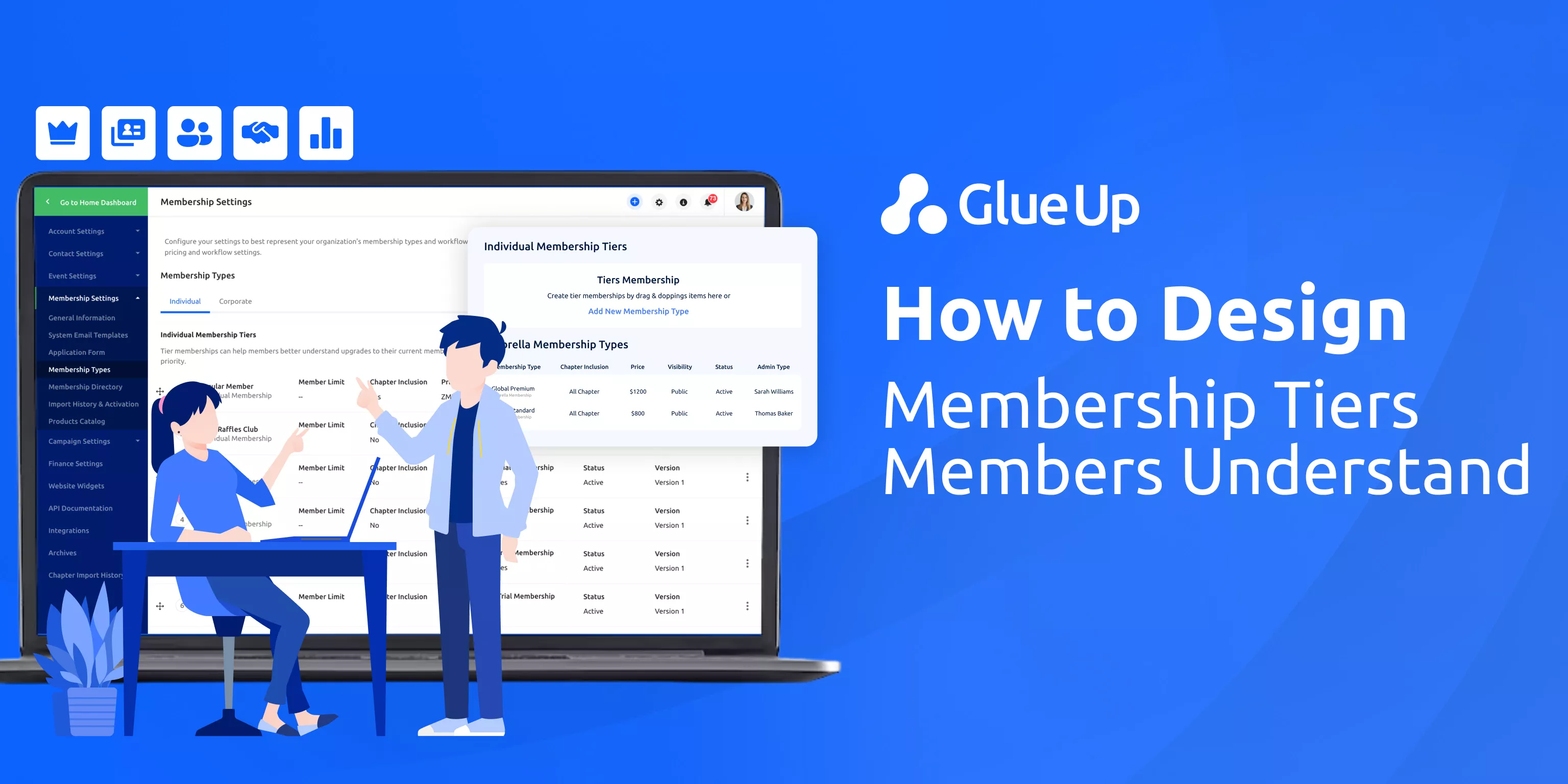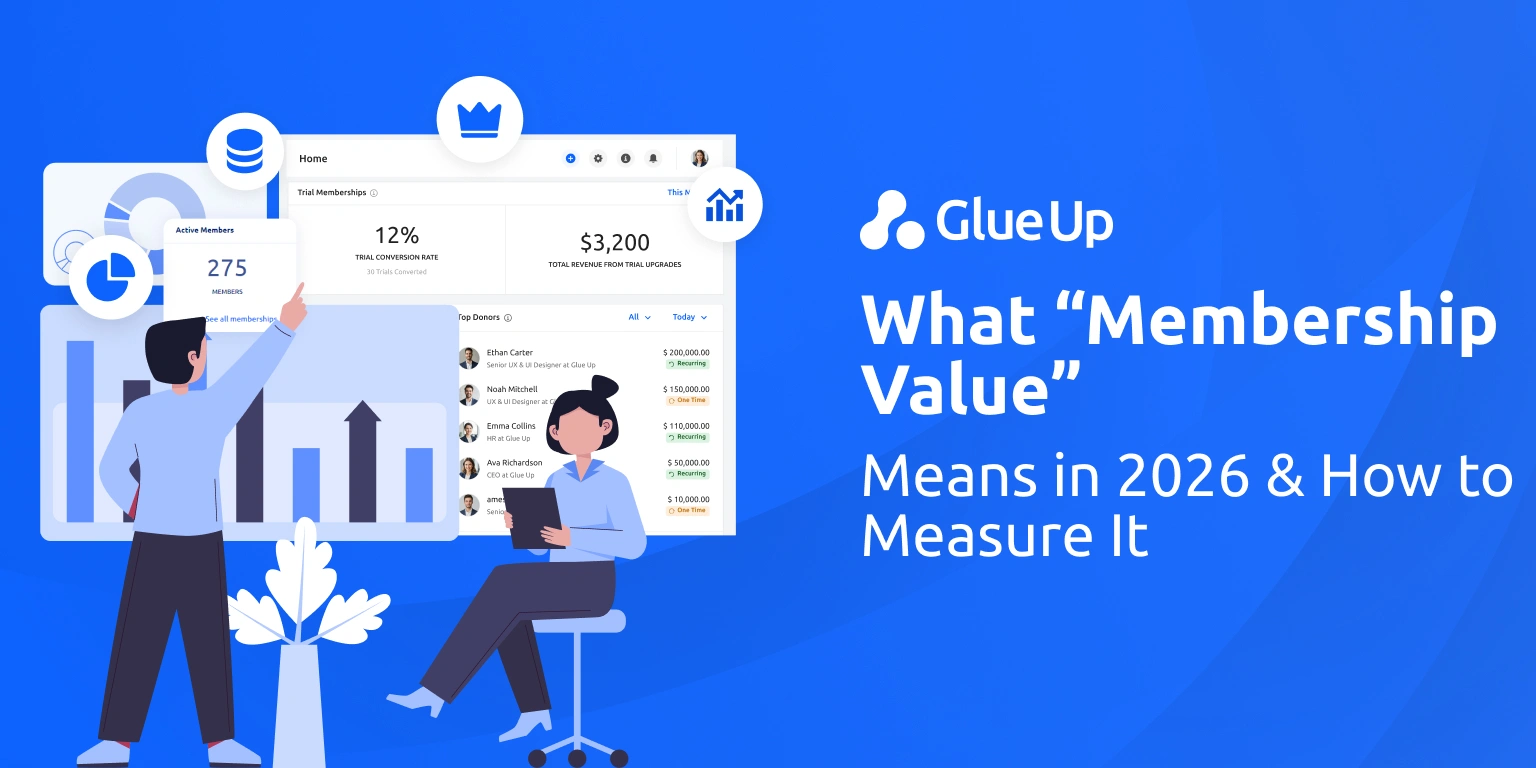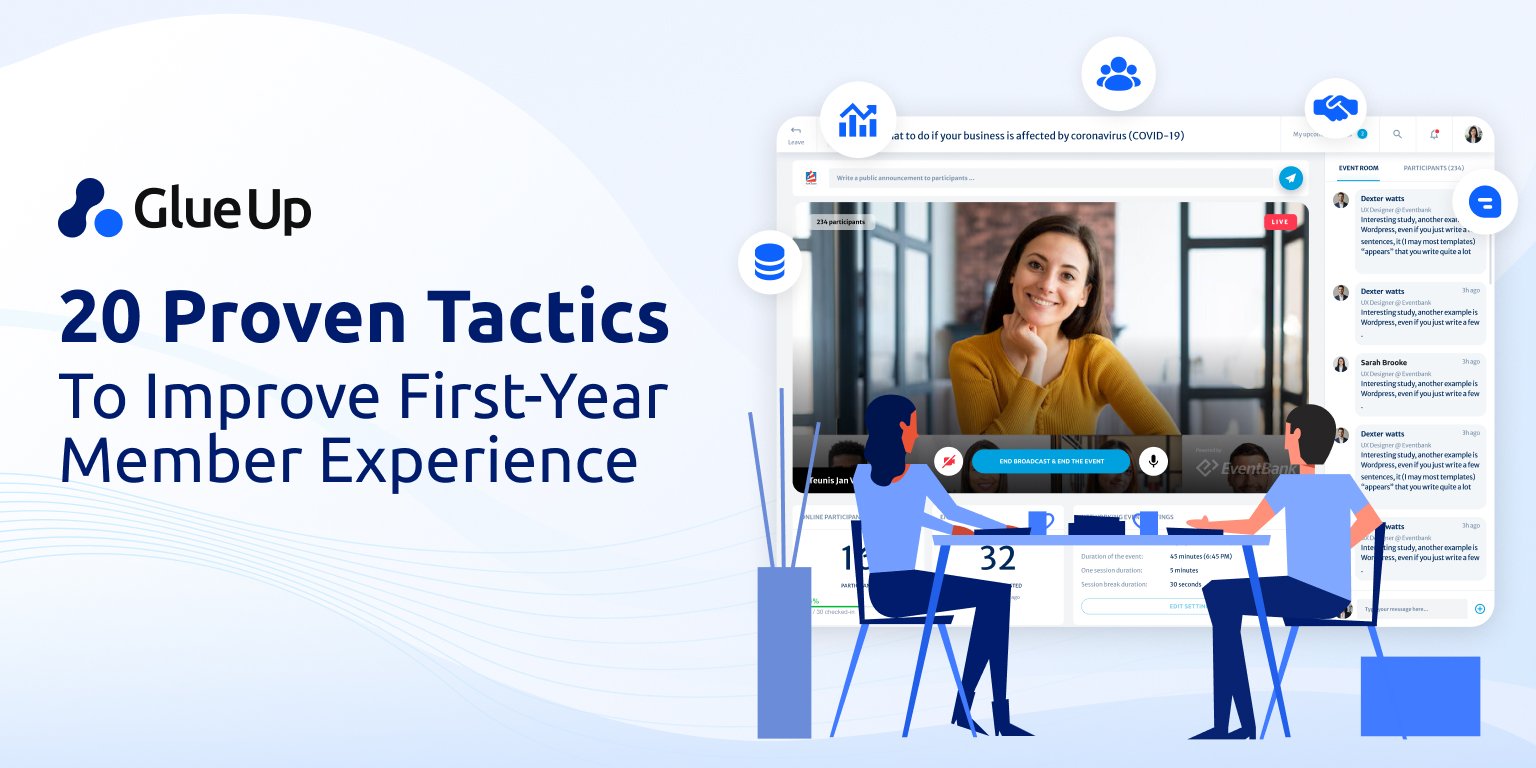
The most successful membership models start with personas, not pricing. When you define who each tier serves before deciding what it includes, you turn pricing into a strategic tool. Effective membership tiers align benefits with behaviors, connecting the value members receive to the outcomes they seek: visibility, access, learning, or influence.
In this post, you'll learn how to build a tiered structure that members immediately understand, design value ladders that drive retention and upgrades, and use data from your CRM to refine benefits over time.
Prefer a faster overview? Book a quick demo and see how Glue Up's Membership Module helps associations design, manage, and optimize membership tiers that align engagement with value.
Key Takeaways
- Effective membership tiers begin with personas and motivations, not pricing.
- Each level should deliver cumulative, measurable outcomes that scale in value.
- Data from your membership CRM validates which benefits drive retention.
- Transparent communication builds trust and supports upgrade decisions.
- Glue Up's all-in-one AMS automates tier creation, renewals, billing, and engagement in a connected workflow.
What Is a Tiered Membership?
A tiered membership system is a structured model that organizes members into levels based on their goals, engagement, or contribution. Each tier defines its own benefits, pricing, and participation rights to align perceived value with actual usage and architect value exchange.
The purpose is clarity: members should instantly understand what differentiates one tier from another, why it costs more, and how it advances their outcomes. In a well-structured model, tiers represent evolving relationships, not price points. Lower levels focus on inclusion, while higher levels emphasize influence, visibility, and partnership.
Start With Personas, Not Price
If you start by pricing, you'll end up negotiating value. If you begin with personas, you'll design it. The foundation of effective membership tiers is segmentation — identifying the needs, motivations, and engagement triggers of different member profiles.
Associations that succeed in retention design their membership types around member psychology, not internal convenience. Each level becomes a product designed for a specific behavioral or professional identity.
Tier 1: Core Membership
Who it's for: Individuals or small entities joining primarily for access and connection.
Benefits:
- Access to member-only resources and events.
- Standard directory placement and updates.
- Member discounts on introductory workshops or webinars.
- Regular communications and newsletters.
This tier establishes belonging. It provides immediate, low-barrier access that turns new members into active participants.
Tier 2: Growth or Professional Membership
Who it's for: Professionals or organizations seeking learning, networking, and visibility.
Benefits:
- All Core features.
- Premium directory visibility and profile badges.
- Discounts for conferences and certified training.
- Access to specialized communities or peer groups.
Here, value shifts from access to advantage. You reinforce participation with tangible ROI — skills, exposure, and recognition.
Tier 3: Executive or Partner Membership
Who it's for: High-impact stakeholders seeking influence, brand visibility, and strategic collaboration.
Benefits:
- All Growth features.
- Speaking or sponsorship opportunities at major events.
- Invitations to advisory committees or policy discussions.
- Inclusion in premium research, media, or annual reports.
This tier represents partnership, not participation. It transforms your association from a service provider into a strategic platform for its most engaged members.
A well-designed membership model ensures these tiers ladder logically, so each feels like an evolution, not a replacement.
Build Value Ladders That Drive Retention and Upgrades
The next challenge is turning these levels into a living system that grows engagement and revenue simultaneously. Every tiered membership system should communicate three things instantly: what's included, what's aspirational, and what outcomes members can measure.
Define Value in Use, Not in Features
A long list of perks isn't a value proposition. Define benefits by what members achieve, not what they receive. For instance, event access isn't value, measurable connection is. Training discounts aren't benefits, career acceleration is. This shift from deliverable to outcome creates a membership value proposition that resonates.
Make Each Tier Cumulative
Each higher level should include the benefits of the one before it, plus new privileges that justify the upgrade. Cumulative design supports a predictable membership hierarchy and prevents confusion. Predictability strengthens retention because members understand the ladder before they climb it.
Calibrate Pricing to Perceived Value
Your tier-based pricing must reflect proportional increases in outcome, not arbitrary numbers. When value scales transparently, members self-select into the level that matches their ambition, reducing friction during upgrades or renewals.
Use Data to Iterate and Optimize
Your membership CRM should inform tier evolution. Analyze engagement patterns — attendance, content interaction, payment frequency — to understand which benefits members actually use. As industry research confirms, data-driven adjustments increase satisfaction and reduce churn. When you rely on evidence, your membership segmentation becomes a feedback loop.
Communicate With Precision
Members renew clarity, not confusion. Visual comparison charts, short descriptions, and plain-language naming conventions make tier distinctions obvious. As recent industry guidance suggests, clear naming and transparent benefits are among the strongest predictors of tier adoption.
How Glue Up Simplifies Tier Design and Management
Every modern association or member-based organization needs an all-in-one ecosystem, not a pile of tools. In practice, that means one centralized hub that connects CRM, Finance Module, Campaigns, and Community, so membership tiers operate like a system. Glue Up gives you that spine, with connected workflows that map cleanly to real behaviors, benefits, and outcomes.
End-to-End Tier Setup and Automation
Design association membership levels as distinct membership products with pricing, duration, approvals, and upgrade or downgrade paths. Automate renewals, prorations, reminders, and confirmations so your tiered pricing strategy runs without manual intervention.
Unified Member Data and Engagement Tracking
Every contact's record shows payments, event attendance, campaign engagement, and renewal status in one membership CRM. Use Smart Lists to segment by activity, value, or risk and to validate your membership value proposition with data. You see which types of memberships drive the most participation and which benefits actually retain members.
Dynamic Benefit Delivery and Visibility
In the Community Module (add-on), you control access by community or group so each level experiences the right resources, events, and files. Pin high-value content for specific groups, organize repositories, and govern visibility without clutter. Executive groups can access private discussions or reports, while core groups receive standard updates, all managed through configurable permissions and workflows. This is how you operationalize membership benefits by level without confusion.
Financial and Forecasting Clarity
The Finance Module centralizes invoicing, receipts, and reconciliation so you can monitor dues by tier, ARPM, and renewal pacing in real time. Tie upgrades and renewals directly to dashboards to forecast by association membership levels and validate premium uptake across membership tiers.
Scalable Member Experience
Use the Campaigns suite to personalize outreach by tier, lifecycle stage, or behavior. Promote training, directory placement, or event access to the segments that value them most. Build simple comparison charts in your communications so members understand tiered membership at a glance and how each level ladders value.
Simplify Complexity, Amplify Value
Tiered membership is less about hierarchy and more about clarity. When your tiers communicate purpose, scale with engagement, and operate on unified systems, you build both trust and traction.
Glue Up helps you foster and maintain workflow discipline. Its all-in-one AMS unifies membership, finance, community, and communications so you can design membership tiers that members understand, value, and renew.
Book a quick demo today to see how Glue Up helps associations turn tier design into a structured growth strategy built on insight, automation, and measurable results.
Frequently Asked Questions
What is a tiered membership system?
It's a structured framework dividing members into levels that offer distinct benefits, pricing, and engagement aligned with their goals.
Why start with personas instead of pricing?
Because motivation drives renewal. Designing tiers around real member personas ensures benefits match expectations and justify investment.
How do I decide what benefits belong in each tier?
Map benefits to measurable outcomes such as access, exposure, and influence. Align them with your membership value proposition and data insights.
How does technology simplify tier management?
A unified AMS like Glue Up integrates CRM, finance, campaigns, and community tools to automate workflows and provide full visibility across tiers.
What makes Glue Up's approach to membership tiers unique?
Glue Up connects every operational module — Membership, Finance, Campaigns, and Community — into one system that automates tier-based billing, permissions, and engagement tracking with measurable accuracy.
Quick Reads
- How to Build a Revenue Engine with Association Management Software
- Add-On Cart for Member Retention & Growth
- Simplify Multi-Currency Payment Posting for Community Chapters With Glue Up + Paygage
- AI Automation for Event Registration & Beyond
- Integrating AI into CRM for Membership Growth
- How to Build a Chapter Event Calendar
- What Is All-In-One Association Software?
- AI-Powered Member Check-In Software



